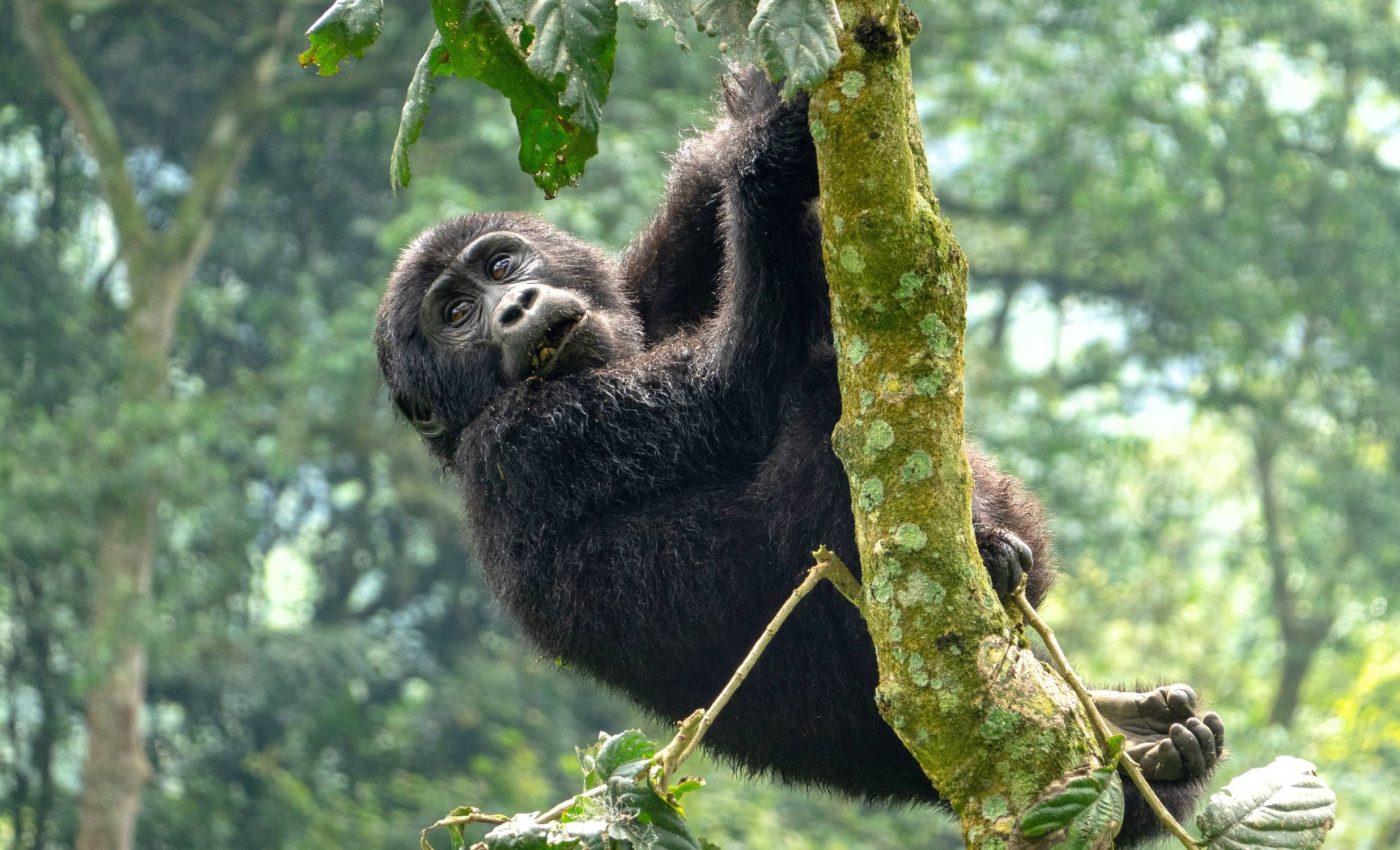
Gorillas spend much more time in trees than we previously thought
Gorillas, often thought of as ground dwellers, spend much more time in the trees than previously assumed. This finding from the Max Planck Institute challenges long-standing ideas about the anatomy and evolution of gorillas.
Western and Bwindi mountain gorillas, studied across Gabon and Uganda, were observed over many years. Even the largest males, weighing up to 170 kg, showed substantial tree use.
Adult females in Loango spent 34% of their time in trees, while Bwindi females clocked 21%. That is a huge jump from the 7% figure for Virunga gorillas.
Study lead author Dr. Martha M. Robbins is a zoologist in the Department of Primate Behavior and Evolution at the Max Planck Institute for Evolutionary Anthropology.
“Adult females spent 20% to 30% of their time in the trees, while silverbacks spent 18% to 20% of their time being arboreal, which is much more than 2 to 7% found previously in the Virunga mountain gorillas,” said Dr. Robbins.
Different gorillas, different tree habits
The Virunga population shaped our early understanding of gorilla habits. These highland gorillas live in fruit-scarce zones and rarely climb. But the new study included data from five groups in Bwindi and one in Loango, totaling nearly 5,200 observation days.
The findings are clear: tree use varies widely between populations. Even juveniles and subadults in Bwindi and Loango spent 32% to 43% of their time in trees – double the rate seen in Virunga’s younger gorillas.
The researchers also found that body size plays a role but does not prevent tree climbing.
“This demonstrates that the large body size of gorillas is not necessarily a limiting factor to tree climbing and that gorillas can be just as arboreal as some chimpanzee populations,” said co-author Rhianna Drummond-Clarke.
Climbing is not just about fruit
The researchers expected fruit to be the main driver behind climbing. While gorillas did climb more while eating fruit, the full story is more complex. In Loango, adult females were more arboreal when eating leaves than fruit. In Bwindi, the reverse was true.
Even silverbacks, the heaviest individuals, climbed trees to eat fruit. At Bwindi, silverbacks were arboreal 82% of the time they ate fruit. But fruit formed just 14% of their diet, meaning most of their tree time involved eating leaves.
At Loango, gorillas often ate fallen fruit from the ground. This shows fruit-eating can be a terrestrial act too. Meanwhile, western gorillas also ate lots of tree leaves, about 30% of their diet, driving folivorous tree use, similar to some monkeys.
Feeding is the main reason to climb
What were the gorillas doing in trees? Mostly feeding. Adult female gorillas were far more likely to climb while feeding than when resting or traveling.
Even when eating nonfruit, Loango females climbed more than Bwindi ones. This likely reflects differences in diet and foraging strategy. The energy payoff from fruit seems to outweigh the climbing cost, especially for massive silverbacks.
Also, Loango females were heavier climbers than their Bwindi peers when not eating fruit. This surprising reversal shows that even leaf-seeking gorillas may spend considerable time off the ground.
What this means for ape evolution
These results have big implications. Gorillas have long been labeled as terrestrial because of their bulk and plant-heavy diets. But that view no longer holds. The study shows gorilla arboreality spans all life stages, from infants to adults.
That shift affects how we interpret the fossil record. Gorilla-like bones have been taken to suggest ground-based life. But frequent tree climbing changes the picture.
“We demonstrate that large body size and a largely folivorous diet in apes are also consistent with frequent arboreality,” noted the study authors.
Studies of limb proportions and bone strength now suggest a range, from more tree-based western gorillas to more ground-based Virunga ones.
This means our models of ancient human relatives may need adjustment. Gorilla-like features may not imply they lived solely on the ground.
Gorillas are tree climbers, not just walkers
Gorillas are not just forest-floor giants. They climb often and for various reasons. From feeding on leaves to exploring the canopy, these behaviors offer key insights into how apes, including humans, evolved.
Future research may look into how such large animals navigate trees. They might distribute their weight across branches or use special movement strategies, similar to orangutans or chimpanzees.
This research opens new doors in our understanding of ape mobility and evolutionary history.
The study is published in the journal Current Biology.
—–
Like what you read? Subscribe to our newsletter for engaging articles, exclusive content, and the latest updates.
Check us out on EarthSnap, a free app brought to you by Eric Ralls and Earth.com.
—–













